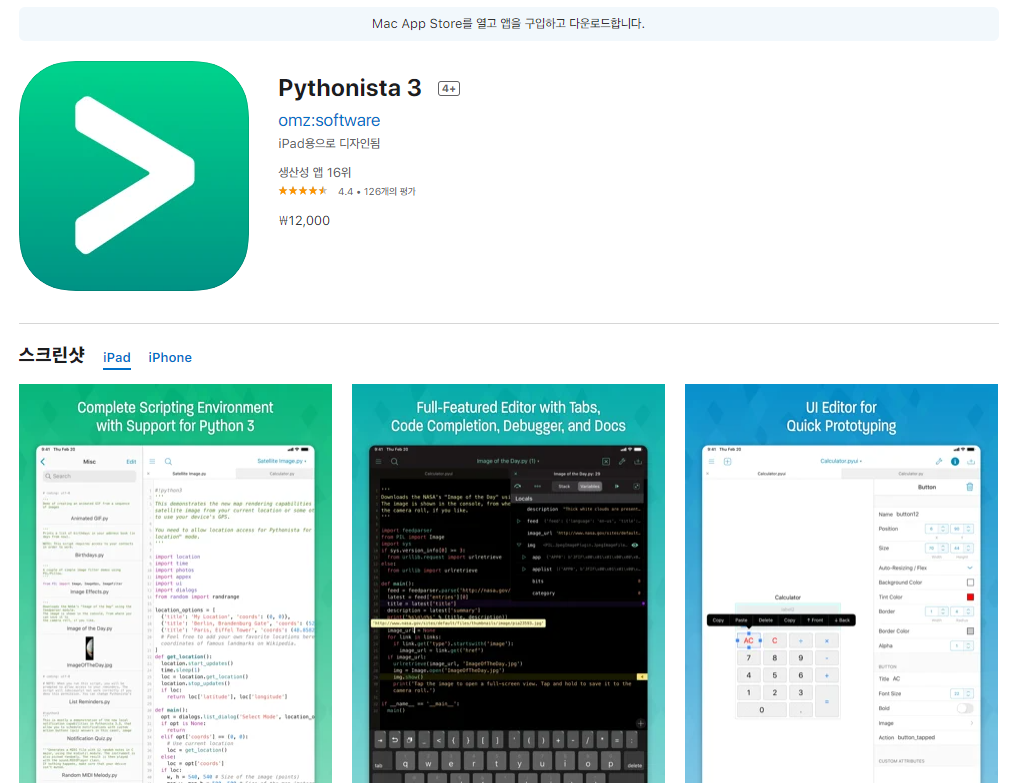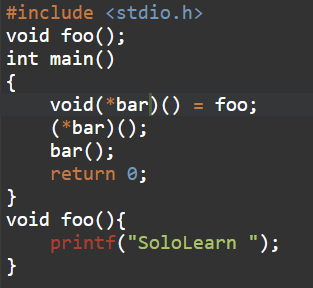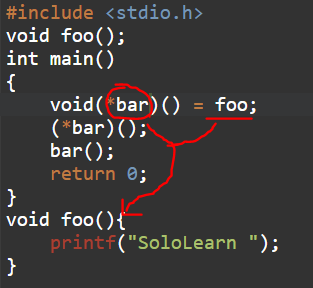최근에 아이패드(ipad pro 5세대 12.9형)를 활용할 일이 많아지면서, 코딩도 아이패드로 하고 싶다는 생각이 들었다.
전에 네이버 부스트코스에서 사용할 수 있는 어플을 추천받았던 것은 가장 대표적인 파이썬 프로그래밍이 가능한 어플인 Pythonista 3이다.
https://apps.apple.com/kr/app/pythonista-3/id1085978097
Pythonista 3
Pythonista is a complete scripting environment for Python, running directly on your iPad or iPhone. It includes support for both Python 3.6 and 2.7, so you can use all the language improvements in Python 3, while still having 2.7 available for backwards
apps.apple.com
다만 아쉽게도(?) 유료라는 점이 존재한다. (무려 12000원이라는 가격)

물론, 유료인만큼 다양한 기능들이 탑재되어있는 것 같긴 한다.
그런데 많은 사람들이 그렇듯, 무료로 사용할 수 있으면서 야무지게 사용이 가능한 어플들도 존재한다.
그중에서 가장 먼저 추천하고, 최근에 컴퓨터 비전을 공부하면서 numpy를 사용하고 있는데, 잘 활용하고 있는 어플인 Carnets - Jupyter 라는 어플이다.
https://apps.apple.com/kr/app/carnets-jupyter/id1450994949
Carnets - Jupyter
Jupyter notebooks are a powerful tool used in education and research. You can write small snippets of Python code and observe the result on screen, combine with paragraphs of text, using Markdown. Carnets provides a complete, stand-alone, implementation
apps.apple.com

놀랍게도 jupyter notebook을 사용할 수 있는 어플이다.
별도의 로그인도 필요가 없다.
또한, .ipynb 확장자명으로 파일이 저장까지 되기 때문에 매우 좋은 어플이고 강력 추천하는 어플이다.
(무엇보다 무료다!)
추가로 하나 추천하고 싶은 어플은 Sololearn이라는 어플이다.
https://www.sololearn.com/home
Sololearn: Learn to Code
Join Now to learn the basics or advance your existing skills
www.sololearn.com

이 어플은 단순히 파이썬을 위한 어플이 아니다.
C언어에서부터, HTML, CSS, C++, Java, Javascript, python 등 매우 다양한 언어들을 다 사용할 수 있으며,
프로그래밍용이라기보다는 프로그래밍 공부용이다.
커뮤니티도 나름 커서 사용자 간에 원하는 프로그래밍 언어로 퀴즈 대결도 가능한 기능이 있다.
물론, 코딩을 간단하게나마 해서 바로 출력 결과도 확인할 수 있는 기능도 있다.
간단히 생각하면 Stackoverflow의 미니버전이랄까?
아무튼 언어의 기초를 배우고자 하는 분들께서는 이 어플을 사용해도 충분히 괜찮을 것이라고 생각된다.
'기타' 카테고리의 다른 글
| 국내 코딩캠프 정리 (2) | 2021.09.20 |
|---|---|
| 아이패드(Ipad)에서 파이썬 코딩하는 방법 - 온라인편 (0) | 2021.09.16 |
| 삼성 Galaxy Z Fold 3 and Z Flip 3 (0) | 2021.08.14 |
| 카톡 먹통 해결방법(by 삼성서비스센터)! (2021년 3월 23일 웹뷰 업데이트 문제) (0) | 2021.03.23 |
| 카톡 먹통 해결방법! (2021년 3월 23일 웹뷰 업데이트 문제) (0) | 2021.03.23 |



